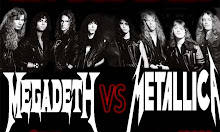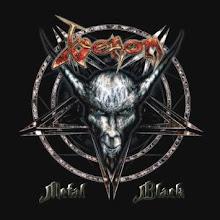 The first wave of black metal emerged in Europe in the early and mid-1980s, led by Britain's Venom, Denmark's Mercyful Fate, Switzerland's Hellhammer and Celtic Frost, and Sweden's Bathory. By the late 1980s, Norwegian bands such as Mayhem and Burzum were heading a second wave. Black metal varies considerably in style and production quality, although most bands emphasize shrieked and growled vocals, highly distorted guitars frequently played with rapid tremolo picking, a "dark" atmosphere and intentionally lo-fi production, with ambient noise and background hiss. Satanic themes are common in black metal, though many bands take inspiration from ancient paganism, promoting a return to pre-Christian values. Numerous black metal bands also "experiment with sounds from all possible forms of metal, folk, classical music, electronica and avant-garde." Darkthrone drummer Fenriz explains, "It had something to do with production, lyrics, the way they dressed and a commitment to making ugly, raw, grim stuff. There wasn't a generic sound."
The first wave of black metal emerged in Europe in the early and mid-1980s, led by Britain's Venom, Denmark's Mercyful Fate, Switzerland's Hellhammer and Celtic Frost, and Sweden's Bathory. By the late 1980s, Norwegian bands such as Mayhem and Burzum were heading a second wave. Black metal varies considerably in style and production quality, although most bands emphasize shrieked and growled vocals, highly distorted guitars frequently played with rapid tremolo picking, a "dark" atmosphere and intentionally lo-fi production, with ambient noise and background hiss. Satanic themes are common in black metal, though many bands take inspiration from ancient paganism, promoting a return to pre-Christian values. Numerous black metal bands also "experiment with sounds from all possible forms of metal, folk, classical music, electronica and avant-garde." Darkthrone drummer Fenriz explains, "It had something to do with production, lyrics, the way they dressed and a commitment to making ugly, raw, grim stuff. There wasn't a generic sound." By 1990, Mayhem was regularly wearing corpsepaint; many other black metal acts also adopted the look. Bathory inspired the Viking metal and folk metal movements and Immortal brought blast beats to the fore. Some bands in the Scandinavian black metal scene became associated with considerable violence in the early 1990s, with Mayhem and Burzum linked to church burnings. Growing commercial hype around death metal generated a backlash; beginning in Norway, much of the Scandinavian metal underground shifted to support a black metal scene that resisted being co-opted by the commercial metal industry. According to former Gorgoroth vocalist Gaahl, "Black Metal was never meant to reach an audience.... [We] had a common enemy which was, of course, Christianity, socialism and everything that democracy stands for."
By 1992, black metal scenes had begun to emerge in areas outside Scandinavia, including Germany, France, and Poland. The 1993 murder of Mayhem's Euronymous by Burzum's Varg Vikernes provoked intensive media coverage. Around 1996, when many in the scene felt the genre was stagnating, several key bands, including Burzum and Finland's Beherit, moved toward an ambient style, while symphonic black metal was explored by Sweden's Tiamat and Switzerland's Samael. In the late 1990s and early 2000s, Norway's Dimmu Borgir brought black metal closer to the mainstream, as did Cradle of Filth, which Metal Hammer calls England's most successful metal band since Iron Maiden.






No comments:
Post a Comment